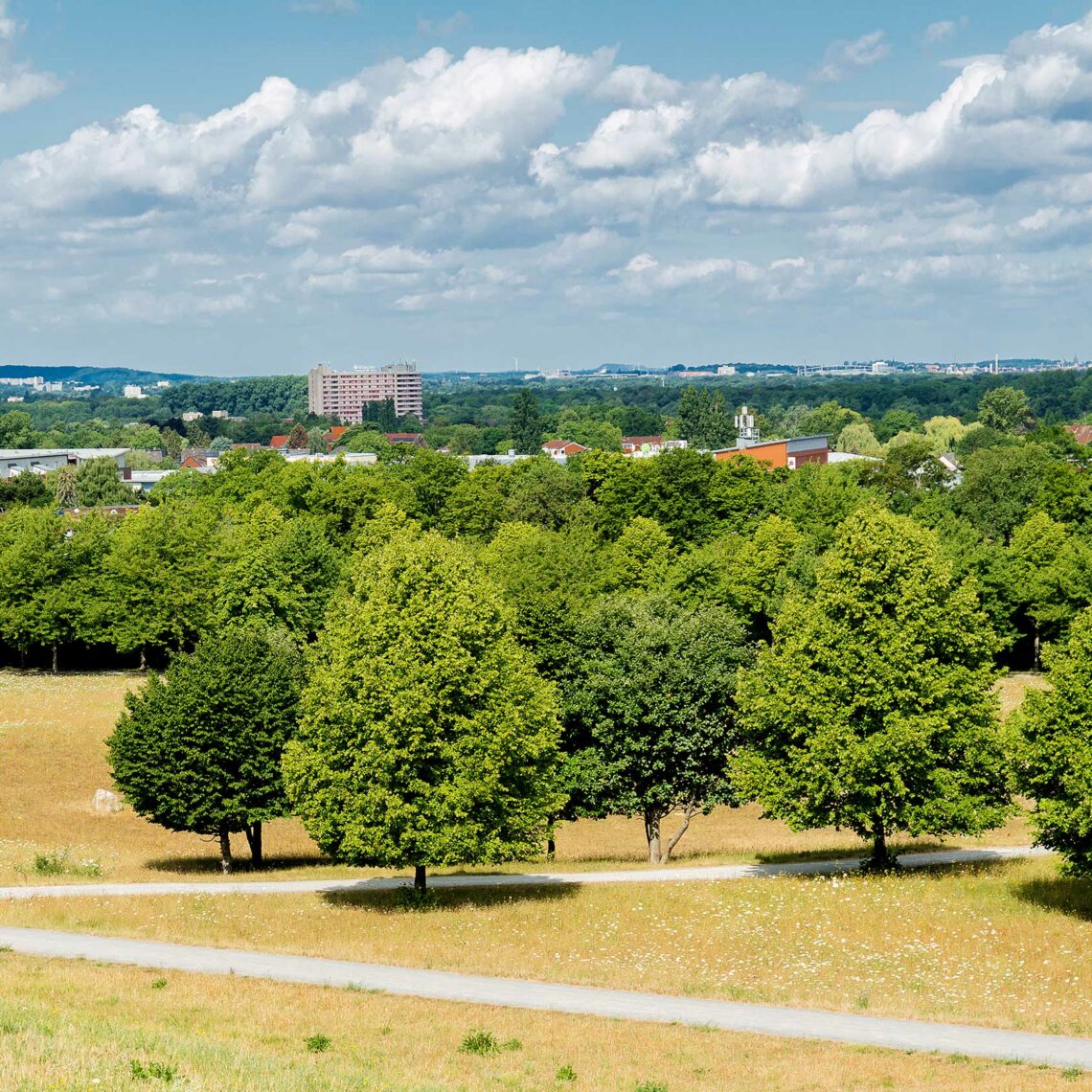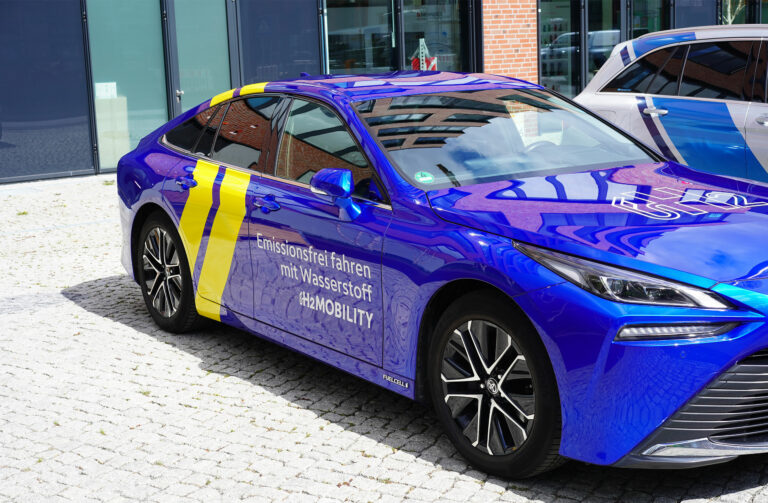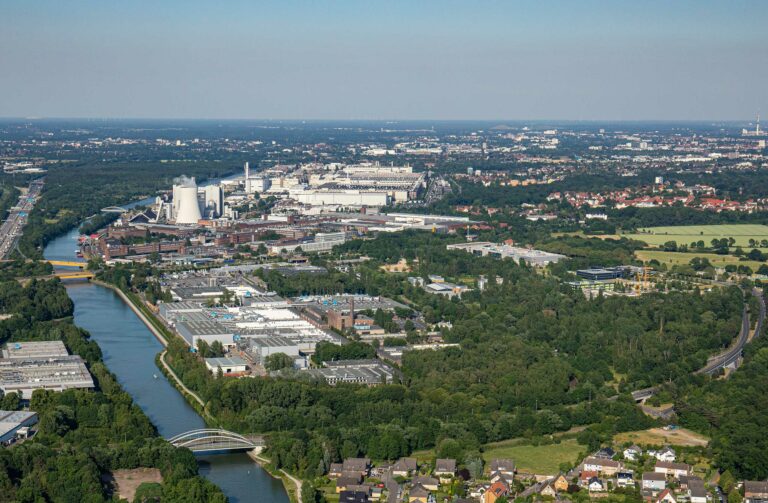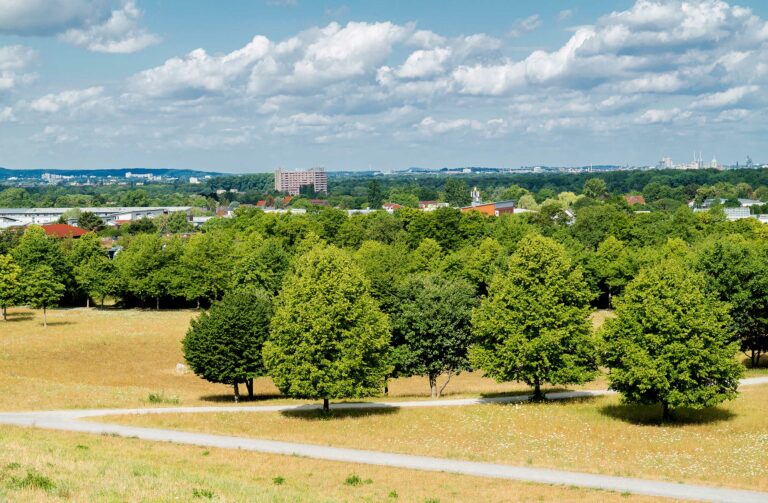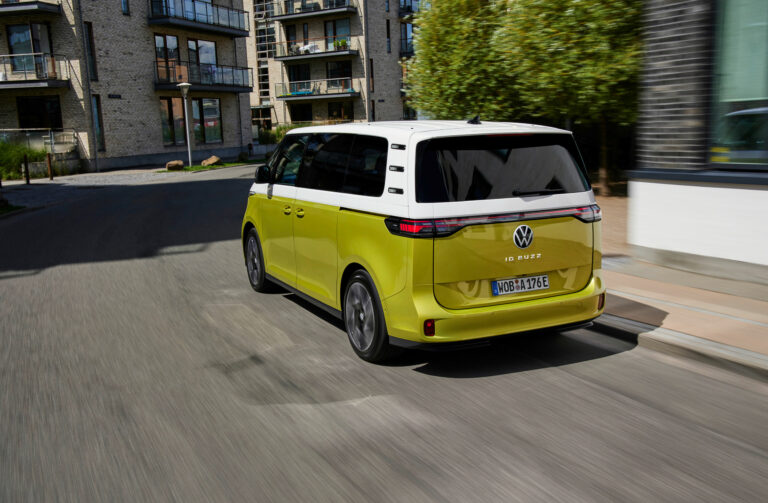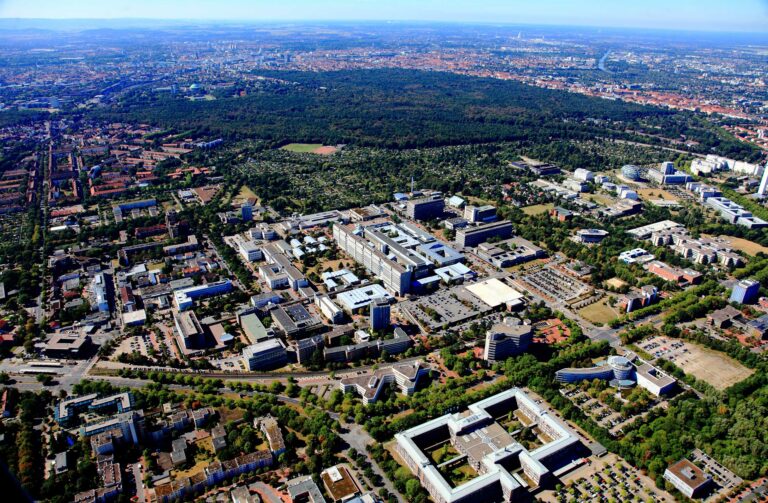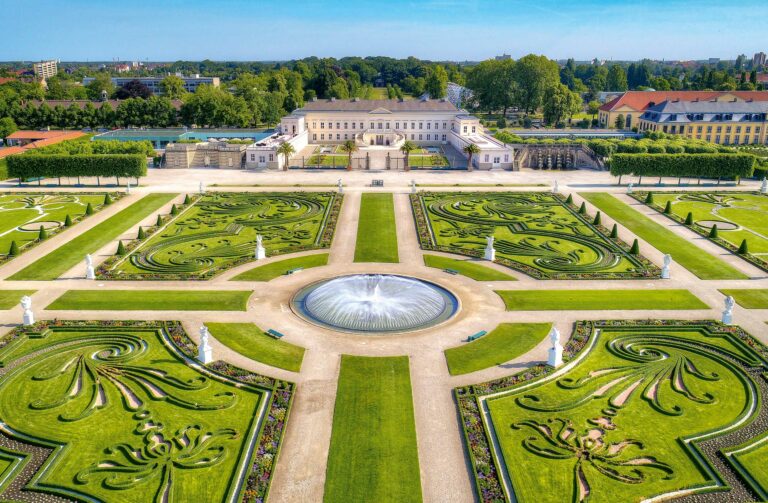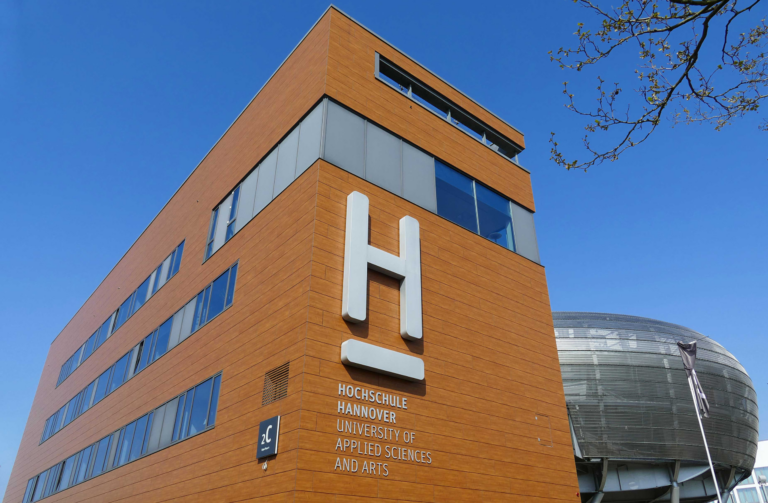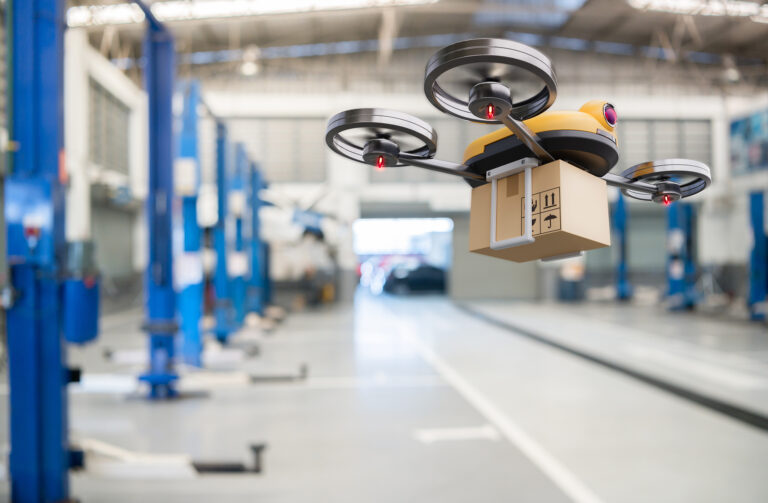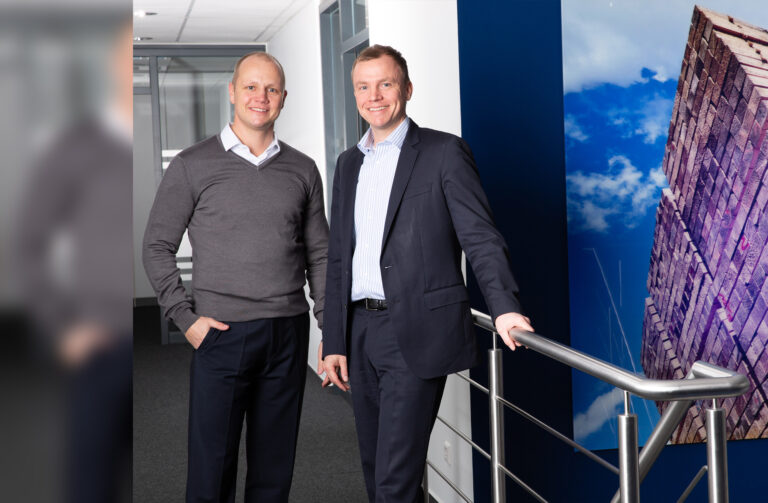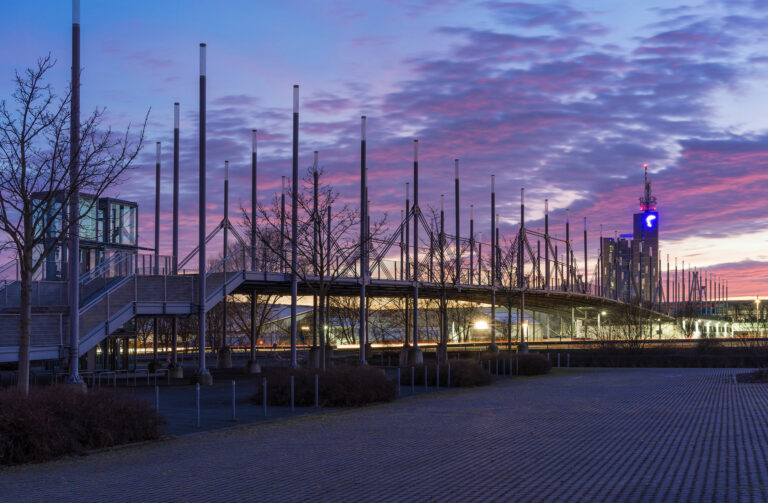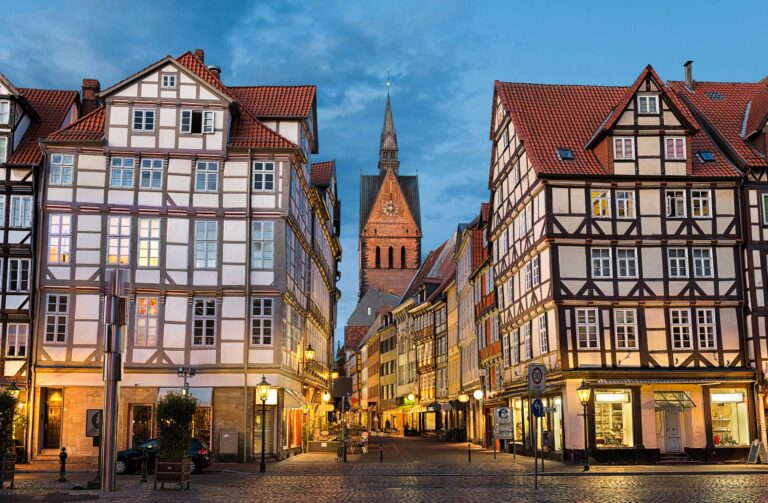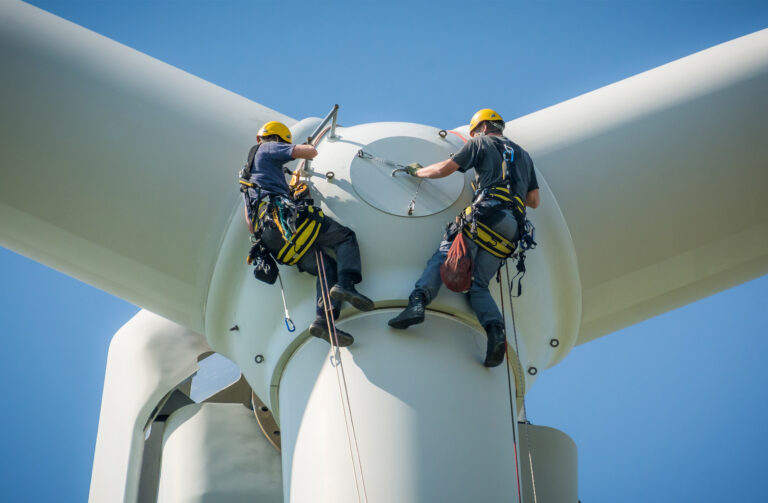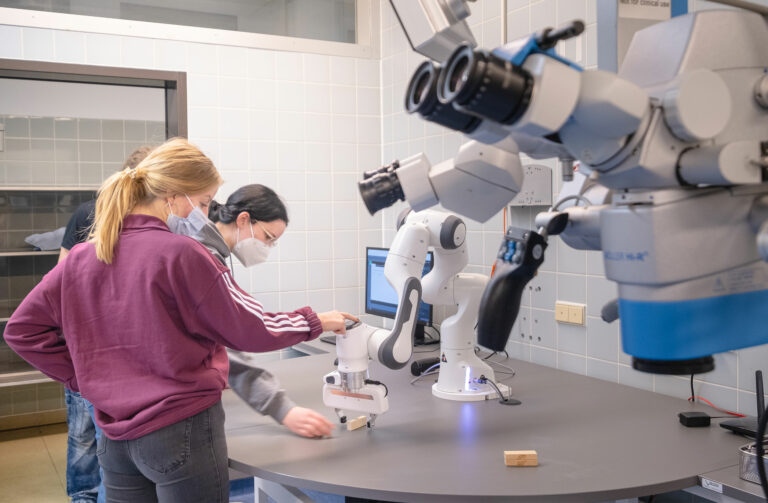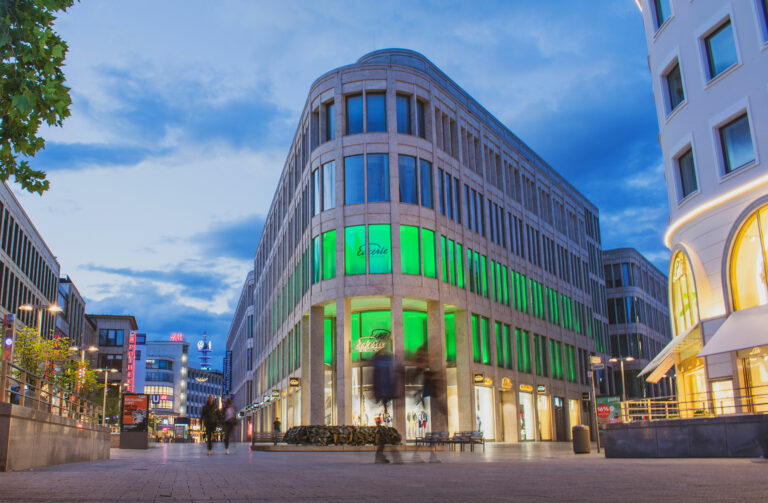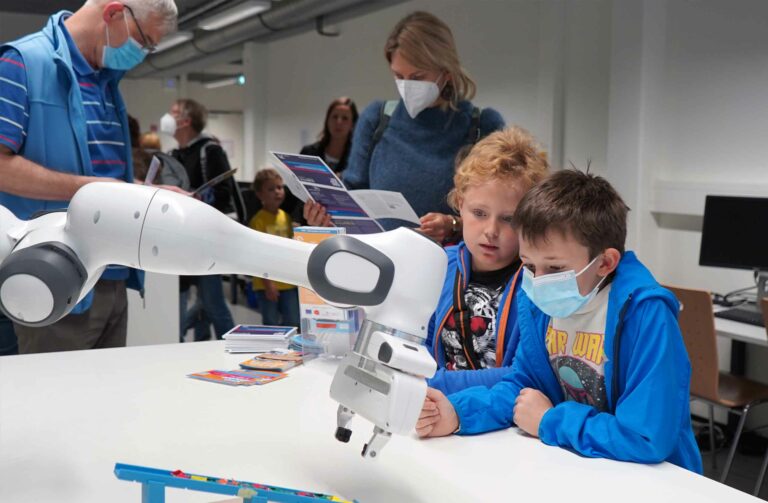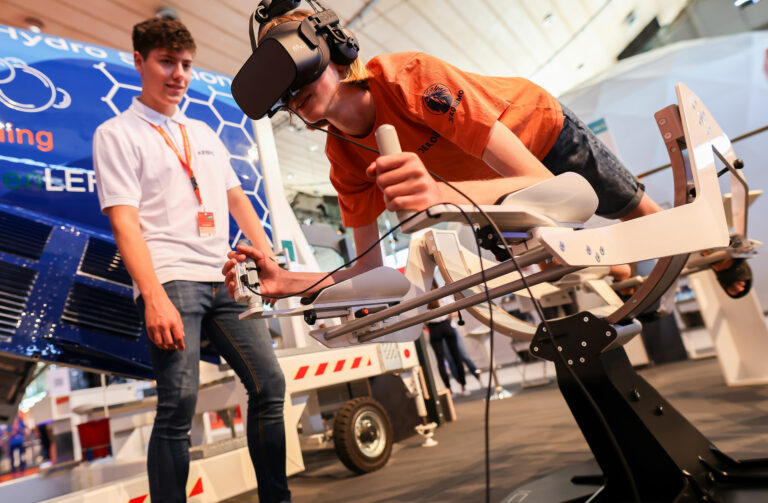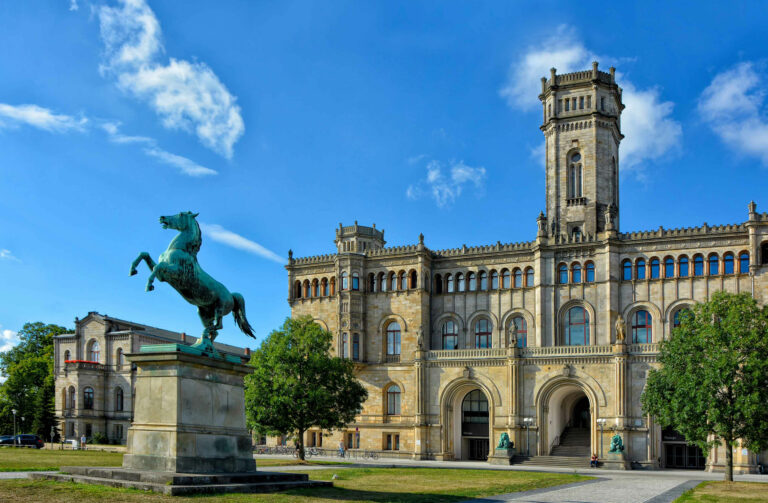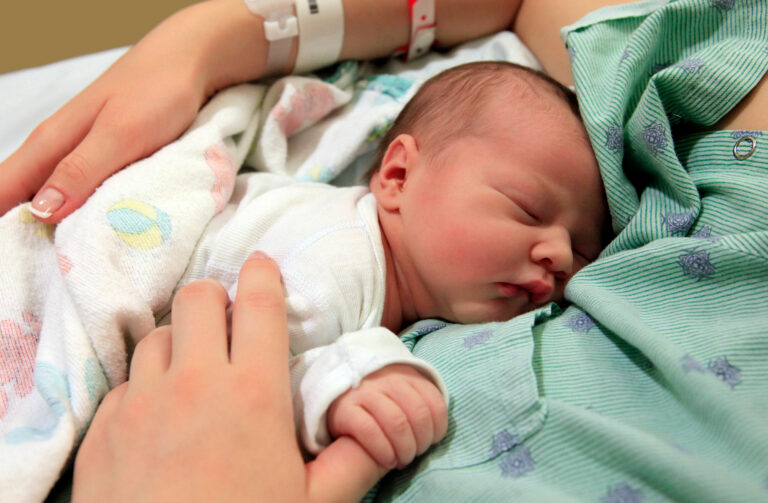Housing construction programmes
On hillsides and at the water’s edge: housing developments in Hannover with a special flair and a good view. Up in the air you can see a crocodile. Right next to it there’s a penguin. Both are a good five metres long. Above them is a figment of someone’s imagination: a trilobite kite whose impressive tentacles stretch out over a huge area of 64 square metres. All these spectacular flying objects are taking part in a hang-glider’s meeting on Kronsberg, Hannover’s highest natural elevation with an altitude of 118 metres. “All it takes is wind force 2, and even the largest models will take off”, says one of the many hang-glider fans that meet here regularly with their club.
The dancing kites make you look to the sky. But the vantage point at the top of the hill also offers a view of many striking buildings in the state capital, as well as the many construction cranes that you cannot miss when you look towards the tower on the exhibition grounds. At the moment, the cranes are a feature of Kronsberg-Süd, which is currently Lower Saxony’s largest building site. It is called Kronsrode by the marketers and offers 3,500 homes for around 8,000 people. The intention is for Kronsberg-Süd to become an attractive place for all generations to live, with an excellent infrastructure, diverse shopping possibilities, a primary school and childcare centres. A park and cafés provide spaces where people can relax and meet others. The A 37 and A 7 motorway, together with the B 6 and B 65 main roads, as well as the tramline 6, offer outstanding connections for long-distance traffic and for getting into the city centre.
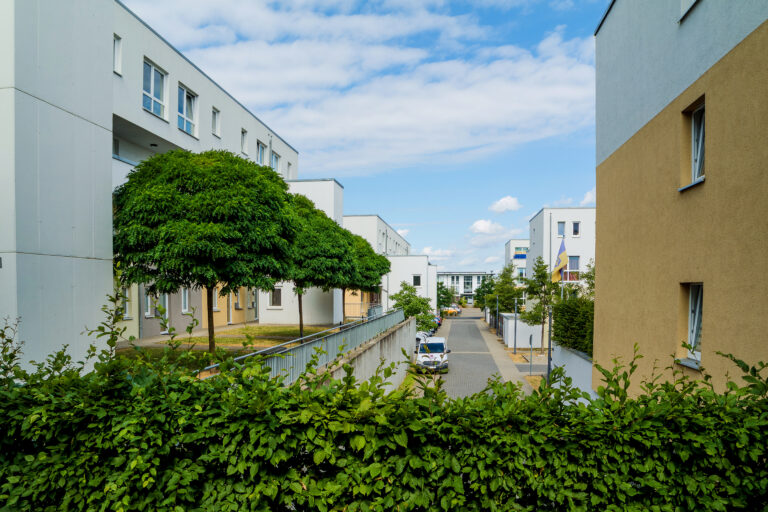
The spirit of the Expo lives on
Seven construction companies, including six from Hannover, are actively involved in Kronsberg-Süd. For city planning director Thomas Vielhaber, the state capital Hannover is thus making an important contribution to the housing construction programmes, with the aim of safeguarding the supply of housing in our city in the medium term. At the same time, Kronsrode will be a modern, green part of the city that completes the developments here in Kronsberg since the Expo 2000.
Indeed, Kronsberg attracted international attention on the fringes of the world exhibition Expo 2000, and the World City Summit 2012 in Singapore commended the ecological estate on the west slope as one of the 100 most innovative infrastructure projects in the world.
This first residential estate on Kronsberg consists of around 3,000 homes in two- to four-storey buildings, together with schools, kindergartens, shops, a neighbourhood centre and the Evangelical Church Centre Kronsberg. Land-saving construction combined with a high building density and diversified architecture creates an urban atmosphere.
For the first time in Germany, a residential estate of this size was built completely according to the low-energy standard. Heating energy consumption per household is about 40 percent lower than with conventional building methods, generating nearly 75 percent fewer carbon emissions. Convincing facts: the concept led to a decision by the city council to apply these standards throughout the whole city, not just for new-builds but for existing buildings too.
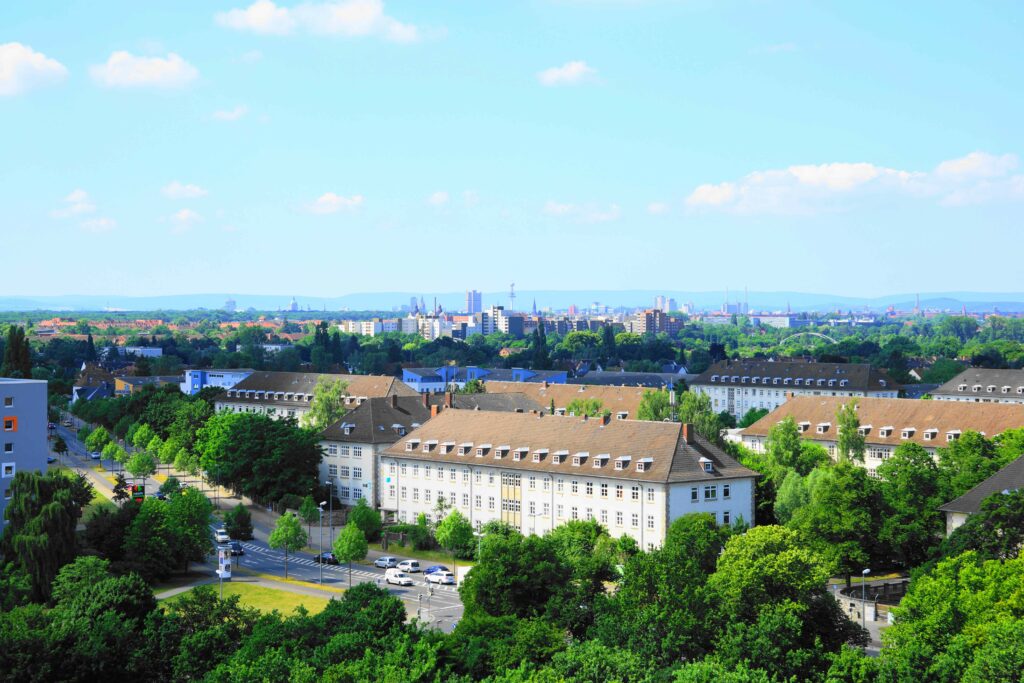
By tram to the riviera
Hannover waste landfill site lies even higher than Kronsberg: the Nordberg, locally known as “Monte Müllo” (Waste Mountain) is 121 metres high and one of Germany’s largest recultivation projects. Just once a year it becomes a tourist destination, on the Discoverers’ Day of the Region Hannover, when thousands of curious onlookers tour the summits every year in the late summer. The exclusive experience in the Lahe quarter offers views of the Brocken in the distant Harz mountains as well as the neighbouring Altwarmbüchener See. The flooded gravel pit covering roughly 50 hectares in size with its sandy beach and sunbathing lawns is a major attraction in the summer and also locally known as the “Hannover riviera”. It takes just 20 minutes to get here by tram from the city centre followed by a short walk before visitors can jump into the cool waters. They can also go on board, with the local aquatics club offering opportunities for sailing, rowing and stand-up paddling to around 700 water sport enthusiasts.
Former barracks, now for families
With around 2,200 inhabitants, Lahe is the smallest quarter in the borough of Bothfeld-Vahrenheide, and a prime example for successful conversion, in this case of barracks into new residential quarters. Between 1984 and 2004, the Prinz-Albrecht barracks in Bothfeld were converted into the Prinz-Albrecht-Carré complex with 128 terraced houses, 34 apartments for the elderly and a childcare centre. In the Sahlkamp quarter in the same borough, construction work on the premises of the former Freiherr-von-Fritsch barracks is due to begin in 2023. There are plans for 770 homes consisting of detached, semi-detached and terraced houses together with a number of apartment buildings, as well as supermarkets and other businesses in Ada-Lessing-Straße. There will also be a park covering 25,000 square metres with leisure amenities and two childcare centres.
A new quarter at the water’s edge
The most impressive example of a new residential area is “Wasserstadt Limmer”, which is emerging on a former brownfield site. Until 1999, Continental AG held production facilities here. The first few of a total of 1,800 homes have already been completed on the site that covers around 240,000 square metres, consisting of apartments as well as terraced or town houses for about 3,500 people. “Wasserstadt Limmer is Hannover’s first construction project so close to the city centre and is thus an important step towards the future. We are creating urgently-needed housing in a lively, well-mixed quarter with a high standard of living. I’m pleased to see the first signs of life in the buildings as Wasserstadt starts to take shape”, says city planning director Thomas Vielhaber.
The area is particularly impressive because of its location on the water on a kind of peninsula between the Leineabstiegskanal and the Linden branch canal. This creates a special flair – and great opportunities for water sports enthusiasts.
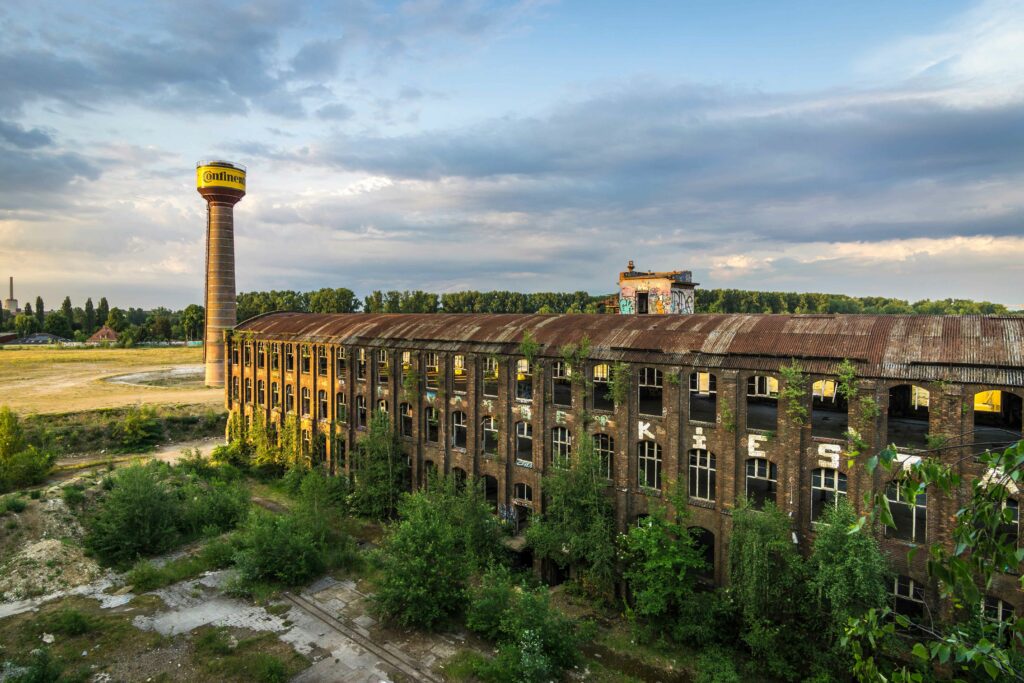
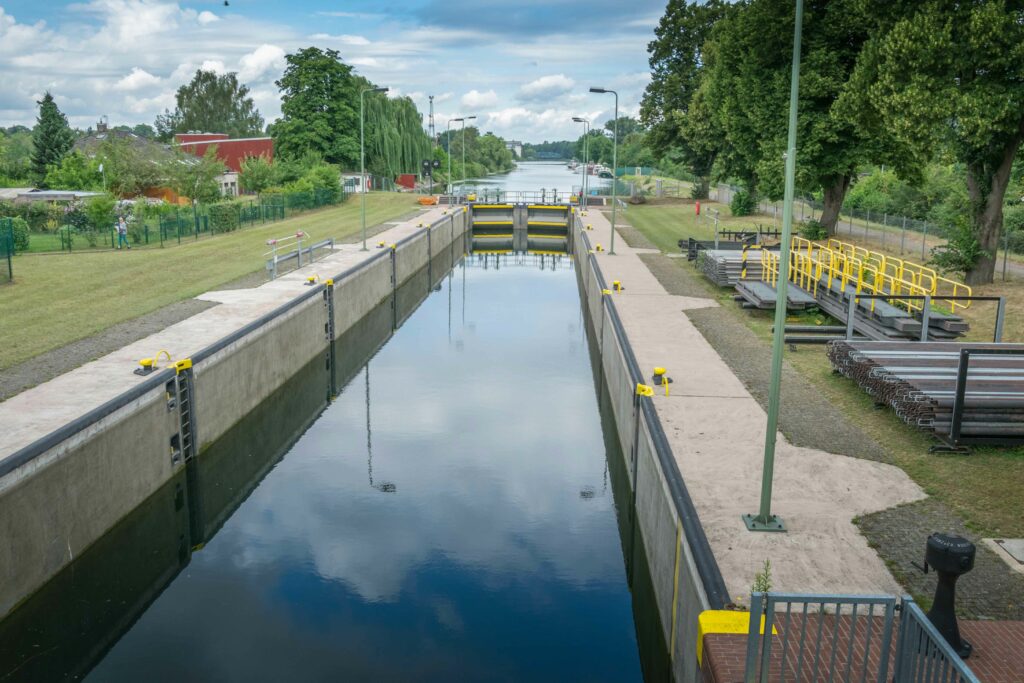
Wasserstadt Limmer is being built alongside a canal on the brownfield site that used to belong to Continental.
Stand-up paddleboarding into the city
The numerous stand-up paddleboarders are among the most active people around here. A view from the bridge shows how popular this sport is. All it takes is a little perseverance to go by canal in what must be the coolest way from Limmer to the rivers Leine and Ihme, where refreshment breaks on the beach are meanwhile part of the established routine for many. The beach club, with its sandy beach, bar and laid-back music, is located in the Fährmannsinsel. This isn’t an island as such: it’s located on a promontory at the confluence of the rivers Leine and Ihme. Between 1877 and 1947, a cable ferry brought people across to Linden-Nord.
Further upstream on the river Ihme, the Ihmezentrum complex cannot be missed. This “city in the city” was built in the early 1970s in the new Brutalism style on what was, in those days, Europe’s largest cast concrete foundations. For a good 20 years, the Ihmezentrum was a lively place to live, shop and socialise. The apartments are still popular, but the retail trade and catering sector struggled to survive. The building complex has changed hands repeatedly since 2000 and urgently-needed refurbishment work kept coming to a halt.
The dimensions of the Ihmezentrum are particularly impressive when approached by water, and it is only after another 500 metres or more that the concrete giant is superseded by the Capitol-Hochhaus. Built in the 1930s in the Brick Expressionist style, the tower-like building points the way to Linden, which became part of the city in 1920 and today consists of Linden-Mitte, -Nord and -Süd. Linden offers a high standard of living with its Wilhelminian architecture, new housing in gaps between buildings and on former wasteland, as well as a wide range of shopping and entertainment possibilities. This is also where we find the third highest elevation of the state capital: Lindener Berg with an altitude of 89 metres. It’s not suitable for flying kites. But it does have an idyllic beer garden and it’s the best place in Hannover to see the fireworks on New Year’s Eve.
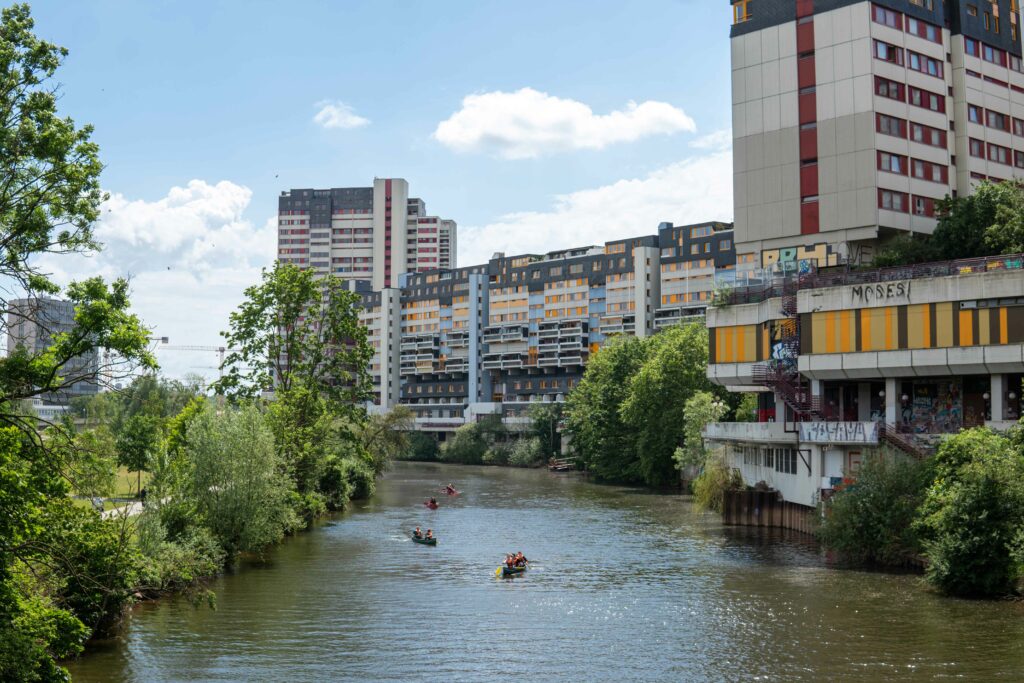
Header picture: View of Hannover from Kronsberg
Photo: Emil Lazar/stockAdobe.com

